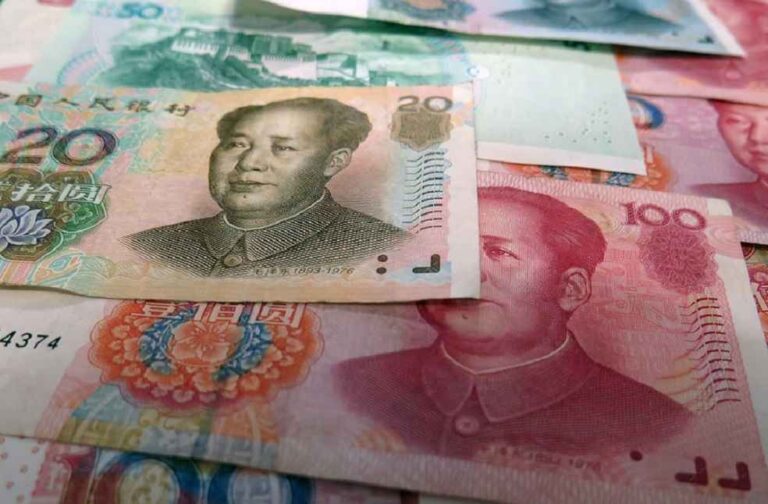Facing mounting Western sanctions, Russia has decisively embraced the Chinese yuan for its trade invoicing, a move that indicates a broader shift away from traditional dollar-based trading practices.
Recent data from the European Bank of Reconstruction and Development (EBRD) brings this to light. In 2022, Russia opted for the yuan in 20% of its import invoices, a significant leap from 3% the previous year.
This strategic shift towards the yuan has correspondingly reduced the use of the dollar and the euro. Historically, these currencies constituted about 80% of Russia’s import invoicing. By 2022, their combined usage had dipped to 67%.

EBRD’s chief economist, Beata Javorcik, commented on this trend: “There has been a “substantial increase in the use of the yuan in Russia’s imports from China, accompanied by a declining share of the US dollar.” She further observed a similar trend with other nations adopting the yuan, suggesting a ripple effect beyond Russia.
The EBRD’s detailed report, Exorbitant Privilege and Economic Sanctions, examines Russian trade transactions from 2016 to 2022. It underscores the repercussions of sanctions, like the notable exclusion of Russian banks from the Swift payment system after the Ukraine incident. These ramifications have complicated and added costs to dollar-based trade for Russia.
One of the standout observations was the marked increase in Russia’s yuan-based invoicing for Chinese goods, from 20% in 2021 to 60% in 2022. Moreover, the yuan’s growing appeal isn’t restricted to Chinese imports. It has gained traction for goods from countries like Taiwan, the Philippines, Malaysia, UAE, Thailand, Japan, Tajikistan, and Singapore. Illustratively, Russia’s import invoicing from Mongolia in yuan jumped from non-existent in 2021 to 18% in 2022.

A deeper dive into the EBRD data shows that the yuan’s popularity is particularly evident for goods under US and EU sanctions. Specifically, the yuan’s use for these sanctioned products surpassed that of non-sanctioned items by a margin of 6-8%.
The shifting currency preferences align with the BRICS group’s (comprising Brazil, Russia, India, China, and South Africa) aim to decrease reliance on the US dollar. The anticipated inclusion of Saudi Arabia, a major player in crude exports, into BRICS, is expected to further bolster this trend. While a shared BRICS currency was a topic of discussion, the recent Johannesburg summit saw members emphasizing the adoption of local currencies for trade.
As these trends evolve, debates around the yuan’s potential to challenge the US dollar’s dominance in global trade have gained momentum. The EBRD suggests that although the dollar’s current strength bolsters the impact of sanctions, such measures could inadvertently weaken its global position.

Insights from a Geneva GTR conference highlighted this shift as the US dollar remains a dominant force, and countries like Russia and China are increasingly veering towards the yuan. This bifurcation might lead to some nations choosing their preferred currency, based on geopolitical and trade affiliations.
Despite these dynamics, the US dollar’s global dominance is evident. Data from the US Federal Reserve affirms its leading role in trade invoicing from 1999 to 2019. Goldman Sachs, meanwhile, suggests that the yuan’s global influence is still nascent, especially given Beijing’s stringent capital controls. These ongoing shifts reflect a dynamic and evolving global trade landscape, with currency choices at its heart.
LATEST NEWS | Hong Kong and Thailand Targets Southeast Asian Economic Throne



